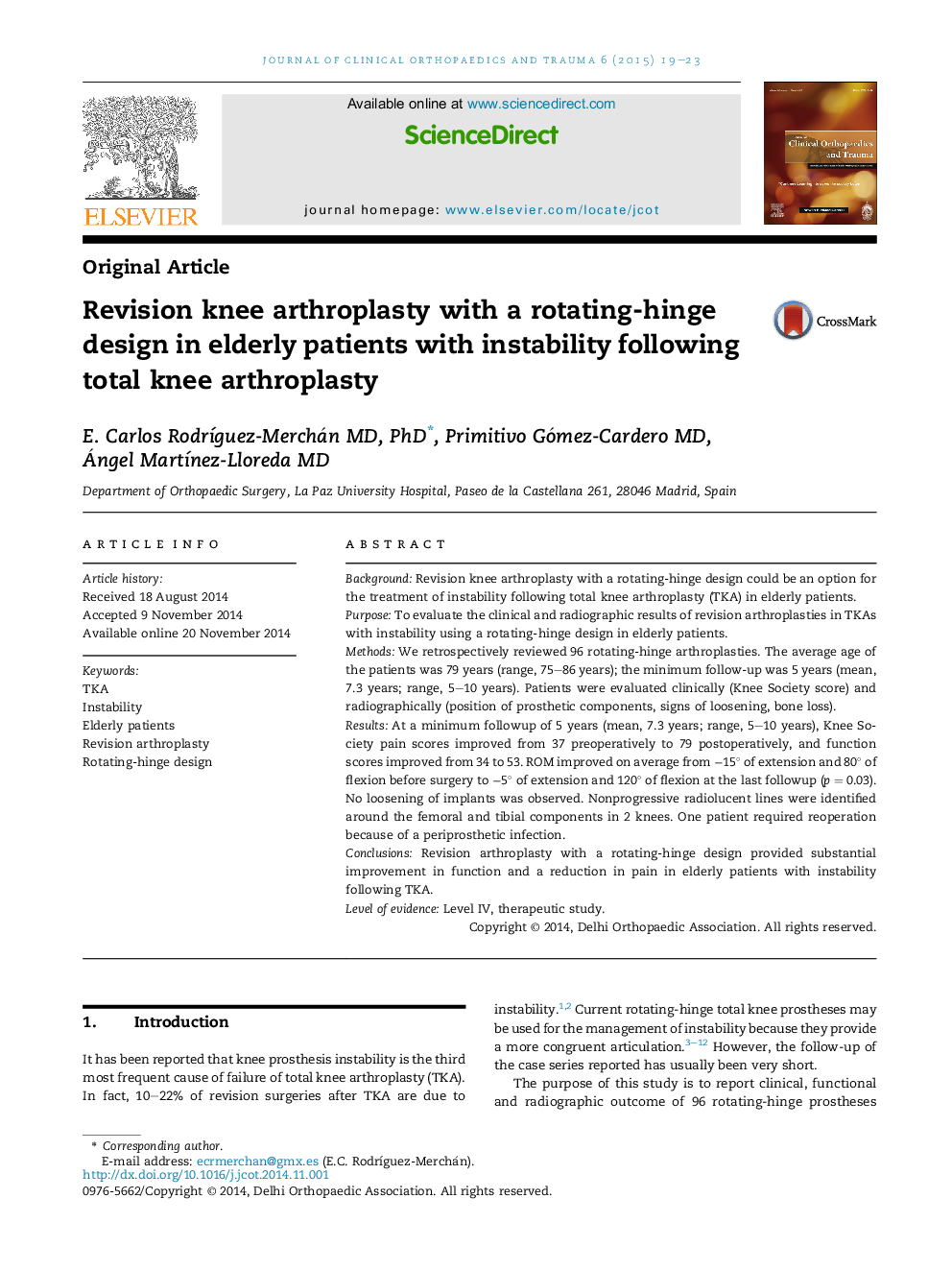| Article ID | Journal | Published Year | Pages | File Type |
|---|---|---|---|---|
| 3245254 | Journal of Clinical Orthopaedics and Trauma | 2015 | 5 Pages |
BackgroundRevision knee arthroplasty with a rotating-hinge design could be an option for the treatment of instability following total knee arthroplasty (TKA) in elderly patients.PurposeTo evaluate the clinical and radiographic results of revision arthroplasties in TKAs with instability using a rotating-hinge design in elderly patients.MethodsWe retrospectively reviewed 96 rotating-hinge arthroplasties. The average age of the patients was 79 years (range, 75–86 years); the minimum follow-up was 5 years (mean, 7.3 years; range, 5–10 years). Patients were evaluated clinically (Knee Society score) and radiographically (position of prosthetic components, signs of loosening, bone loss).ResultsAt a minimum followup of 5 years (mean, 7.3 years; range, 5–10 years), Knee Society pain scores improved from 37 preoperatively to 79 postoperatively, and function scores improved from 34 to 53. ROM improved on average from −15° of extension and 80° of flexion before surgery to −5° of extension and 120° of flexion at the last followup (p = 0.03). No loosening of implants was observed. Nonprogressive radiolucent lines were identified around the femoral and tibial components in 2 knees. One patient required reoperation because of a periprosthetic infection.ConclusionsRevision arthroplasty with a rotating-hinge design provided substantial improvement in function and a reduction in pain in elderly patients with instability following TKA.Level of evidenceLevel IV, therapeutic study.
